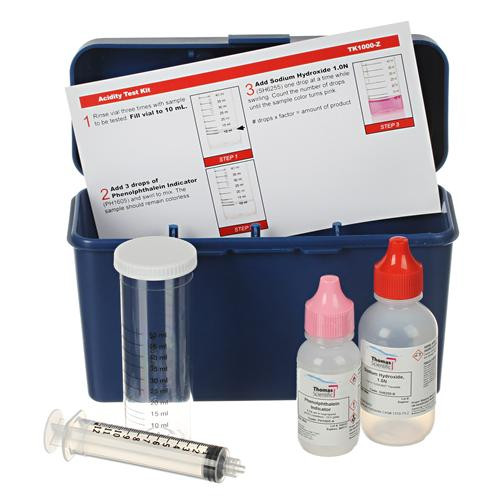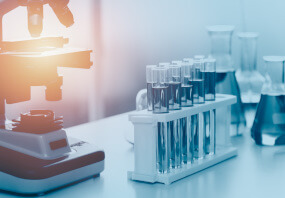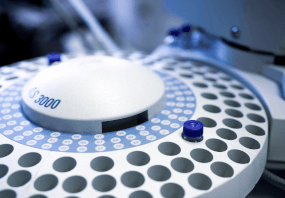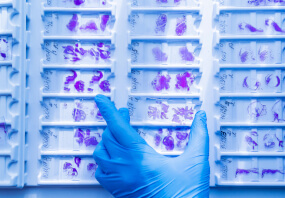Citric acid is widely used in food, medicine, and industry. Meanwhile, citric acid (CA) is also a product of the first step reaction in the tricarboxylic acid cycle, participating in physiological metabolic activities such as respiratory metabolism.Iron (III) - sulfosalicylic acid forms a purple red complex, and citric acid can cause the color of the complex to fade to orange red. At a wavelength of 470nm, the decrease in absorbance is directly proportional to the citric acid content under certain conditions, thus determining the citric acid content in the sample. Components: Reagent name Specifications Save requirements Remarks Extraction solution Liquid 60mL x 1 bottle 4 ℃ storage Before use, shake or centrifuge each tube a few times to allow the reagent to settle Reagent 1 2 bottles of powder 4 ℃ storage Add 1.5mL of distilled water to the bottom and dissolve separately for later use. Prepare and use immediately. Reagent 2 1 bottle of powder 4 ℃ storage Shake a few times before use to make the reagent fall to the bottom, then add 10mL of distilled water to dissolve and set aside. Standard product 1 powder 4 ℃ storage If the calibration curve is to be redone, this reagent will be usedRequired instruments and supplies:Visible spectrophotometer, 1mL glass cuvette (light path 1cm), low-temperature centrifuge, adjustable pipette, mortar, ice, and distilled water.Determination of Citric Acid (CA) Content:It is recommended to select 2 samples for prediction before the formal experiment, understand the situation of this batch of samples, familiarize oneself with the experimental process, and avoid wasting experimental samples and reagents!1. Sample preparation:① Organizational sample:Weigh about 0.1g of tissue, add 1mL of extraction solution, and homogenize in an ice bath. 12000g, centrifuge at 4 ℃ for 10 minutes, take the supernatant and place it on ice for testing.[Note]: If the sample size is increased, it can be extracted in a ratio of tissue mass (g) to extraction solution volume (mL) of 1:5-10② Bacterial and fungal samples:Collect bacteria or cells into a centrifuge tube first, centrifuge and discard the supernatant; Take 5 million bacteria or cells and add 1mL of extraction solution; Ice bath ultrasonic fragmentation of bacteria or cells (power 300w, 3-second ultrasound, 7-second interval, total time 3min); 12000g, centrifuge at 4 ℃ for 10 minutes, take the supernatant and place it on ice for testing.[Note]: If the sample size is increased, extraction can be carried out in a ratio of 1000~5000:1 based on the number of bacteria or cells (104): volume of extraction solution (mL)③ Liquid sample: direct detection. If turbid, centrifuge and take the supernatant for detection.2. Machine testing:① Preheat the visible spectrophotometer for 30 minutes, adjust the wavelength to 470 nm, and zero the distilled water. ② Add sequentially to a 1mL glass colorimetric dish: Reagent name(μL) Measurement tube Blank tube (only done once) Reagent 1 40 40 Reagent 2 160 160 Extraction solution 160 160 Sample 40 / Distilled water 400 440Mix well, incubate at room temperature (25 ℃) for 20 minutes, and measure the absorbance value A at 470nm with Δ A=A blank A.[Note] If the value of tube A is near zero or the final color of tube A is close to colorless, it indicates a high content of citric acid in the sample. The sample can be diluted with distilled water before testing, and the dilution factor D needs to be substituted into the formula for retesting.Result calculation:1. Standard curve: y=0.5746x -0.017; X is the standard concentration (mg/mL), and y is Δ A.2. Calculated by organizational quality:Citric acid content (mg/g fresh weight)=[(Δ A+0.017) ÷ 0.5746 × V1] ÷ (W × V1 ÷ V) × D=1.74 × (Δ A+0.017) ÷ W × D3. Calculated by the number of cells:Citric acid content (mg/10 ^ 4 cell)=[(Δ A+0.017) ÷ 0.5746 × V1] ÷ (500 × V1 ÷ V) × D=0.0035 × (Δ A+0.017) × D4. Calculated by liquid volume:Citric acid content (mg/mL)=[(Δ A+0.017) ÷ 0.5746 × V1] ÷ V1 × D=1.74 × (Δ A+0.017) × DV - Add extraction solution volume, 1 mL;V1- Add sample volume, 0.04mL;W -- Sample quality, g;500- Total number of cells or bacteria; 5 million;D - dilution factor, undiluted is 1.Attachment: Standard Curve Production Process:1. Preparation of Standard Mother Liquor (1mg/mL): Add 1mL of distilled water to the standard EP tube (the mother liquor needs to be used within two days and at -20 ℃ Save).2. Dilute the mother liquor into six concentration gradients of standard samples: 0, 0.2, 0.4, 0.6, 0.8, 1 mg/mL。 The standard can also be adjusted based on actual samples standard concentration.3. According to the sample addition table of the measuring tube, a standard curve can be created based on the results.
Related Documents: https://ald-pub-files.oss-cn-shanghai.aliyuncs.com/aladdinsci/pdp/sds/1/C486322-SCI_2a843991f44e16e1e91253197fa043d1.pdf
- UPC:
- 51172465
- Condition:
- New
- Availability:
- 4-8 weeks
- Weight:
- 1.00 Ounces
- HazmatClass:
- No
- WeightUOM:
- LB
- MPN:
- C486322-48T
- Product Size:
- 48T












